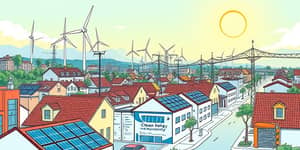Across the globe, conventional wisdom has long held that sustainable farming comes at the expense of profitability. However, mounting data tells a different story: integrating ecological practices can drive stronger margins, reduce risk, and unlock premium markets. By reimagining our approach to food production, farmers and companies alike can achieve both environmental stewardship and financial success.
In this article, we explore the compelling economics behind regenerative and sustainable agriculture, from market growth and cost savings to consumer demand and risk management. You’ll discover why the future of farming rewards those who invest in soil health, biodiversity, and innovation.
Market Growth and Industry Trends
The sustainable agriculture sector is experiencing rapid expansion, reflecting increasing investment and consumer interest worldwide. Global revenues for sustainable farming methods jumped to $15.07 billion in 2024 and are projected to reach $16.75 billion in 2025, growing at an impressive 11.2% CAGR. Meanwhile, products certified as regenerative are set to capture new market share, with estimates forecasting a $29.7 billion valuation by 2032 at an annual growth rate between 15% and 20%.
This surge signals more than a passing trend—it highlights a paradigm shift in how food is produced and valued. Companies and farmers who embrace regenerative techniques stand to benefit immensely from this momentum.
Profit Margins and Cost Savings
One of the most compelling reasons to adopt sustainable practices is the financial upside. Farmers report that profit margins that are 20–30% higher than conventional operations are not uncommon. These gains stem from both revenue improvements and significant cost reductions.
- Input costs can drop by 25–50% as reliance on synthetic fertilizers and pesticides declines.
- Improved soil health reduces irrigation needs and external labor expenditures.
- Enhanced resilience to pests and disease cuts unexpected expenses.
By fostering natural nutrient cycles and biological pest control, sustainable systems eliminate much of the expense associated with external inputs. Farmers who once budgeted heavily for chemicals now reinvest savings into infrastructure, equipment, or expansion.
Premium Markets and Consumer Demand
Consumer willingness to support sustainable practices plays a pivotal role in driving farm income. Recent surveys reveal that 89% of consumers willing to pay more for regeneratively grown and sustainably labeled products. These shoppers are motivated by concerns over health, environmental impact, and food traceability.
Sustainable food items often command a price premium of nearly 27% compared to conventional alternatives. As supermarket shelves and online retailers expand their ethical offerings, producers enjoy broader market access and higher per-unit returns.
- Direct-to-consumer channels enable even greater margins through subscription boxes and farm stands.
- Certification schemes and traceability platforms build trust and justify price uplifts.
Such market dynamics demonstrate that sustainability is not merely a cost center but a revenue driver—especially for small and mid-sized farms seeking to differentiate themselves.
Rural Development and Corporate Benefits
Shifting to sustainable practices also revitalizes rural economies. Studies show 32% more jobs per farm on regenerative operations compared to conventional farms, as biodiversity management and value-added processing require skilled labor. This translates into stronger local communities and opportunities for younger farmers.
On the corporate side, nearly 80% of food and agriculture companies implementing sustainability strategies report increased revenues, with over 70% achieving reduced operational costs. From improved supplier relations to streamlined logistics, sustainable sourcing strengthens entire supply chains.
- Enhanced operational efficiency through waste reduction and better resource management.
- Stronger brand loyalty and market differentiation for sustainable product lines.
Environmental and Social Co-Benefits
Beyond economics, sustainable agriculture generates invaluable ecological and social returns. Practices like cover cropping, agroforestry, and managed grazing significantly improve soil fertility, enhance carbon sequestration, and increase biodiversity. These benefits contribute to long-term productivity and environmental resilience.
Communities also gain from reduced chemical exposure, improved water quality, and equitable income distribution. Farmers report lower healthcare and cleanup costs, while consumers enjoy safer, nutrient-rich foods.
Transition Realities and Risk Reduction
Transitioning to sustainable methods can raise valid concerns regarding yield impacts and labor requirements. Yet empirical evidence dispels many myths: most practitioners do not experience a short-term drop in productivity, and many see early-stage profit increases. Indeed, reduced dependency on synthetic fertilizers and pesticides often offsets any initial labor premium.
Sustainability serves as a powerful buffer against shocks. With climate volatility and economic risks buffer built into resilient farm systems, producers avoid the worst effects of extreme weather and input price swings. This risk management aspect is increasingly recognized in policy frameworks and financial lending criteria.
Outlook and Strategies for Adoption
Market forces and technological advancements are making sustainable agriculture more accessible than ever. From precision farming tools to community-supported agriculture models, farmers have a wealth of resources to guide their transition.
Key strategies include:
- Investing in soil health assessments and tailored nutrient management plans.
- Forging partnerships with research institutions and extension services.
- Leveraging cost-share programs, grants, and green financing options.
By embracing innovation and collaboration, farmers and companies can ride the wave of sustainable market growth and secure robust, long-term profitability.
In conclusion, sustainable agriculture is far more than an ethical choice—it is a compelling business strategy. With strong market demand, tangible cost savings, and significant risk mitigation benefits, the case for regenerative farming has never been stronger. As the global food system evolves, those who invest in ecological resilience will reap both financial rewards and the satisfaction of nurturing a healthier planet.
References
- https://www.thebusinessresearchcompany.com/report/sustainable-agriculture-global-market-report
- https://www.keystonebioag.com/article/regenerative-agriculture-statistics/
- https://www.ers.usda.gov/data-products/charts-of-note/chart-detail?chartId=110894
- https://trellis.net/article/sustainable-food-and-ag-practices-lead-to-revenue-growth-for-more-than-70-percent-of-companies/
- https://stbiologicals.com/2025-us-agricultural-outlook-will-tight-margins-be-your-priority/
- https://www.numberanalytics.com/blog/economic-benefits-sustainable-agriculture
- https://eos.com/blog/sustainable-agriculture/
- https://farmonaut.com/blogs/regenerative-agriculture-market-growth-7-powerful-trends-for-2025










